The Protone Icon updates one of Kask’s most acclaimed helmets.
Outwardly, little seems to have changed. However, subtle updates bring the Protone Icon up to date with modern safety concerns, while keeping the comfort, low weight and good looks of the original Protone.
As on the Elemento (the most expensive road bike helmet in Kask’s range), the retention system on the Kask Protone Icon requires a little more pre-ride fiddling than on many other high-end helmets.
But, otherwise, the Kask Protone Icon impresses with excellent all-round performance and comfort.
Kask Protone Icon specification
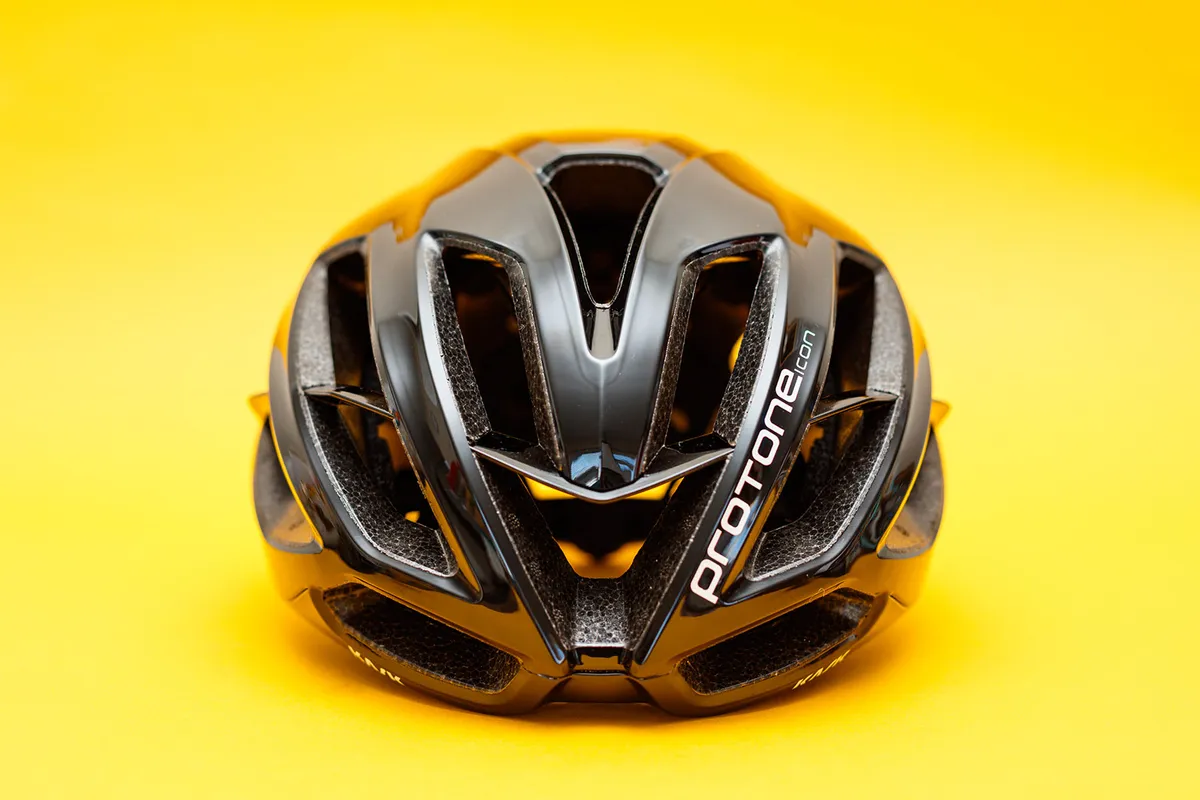
Despite having first appeared on the heads of Team Sky (now Ineos Grenadiers) riders nearly a decade ago, at the 2014 Tour de France, the Protone Icon’s distinctive style still looks on-trend today.
It combines a heavily vented front with matching vents at the rear, with internal channelling designed to pull air over your head and out of the exhaust ports on the trailing edge.
The top of the helmet, meanwhile, is rounded and closed off in a bid to improve aerodynamic performance with your head in an aggressively dropped position.
Where some helmets go all in on ventilation or aerodynamic efficiency, the Protone Icon looks to balance the two.
A more rounded shape than pure aero road helmets, such as the Specialized Evade 3, Trek Ballista MIPS or Kask’s own Utopia Y, and a greater number of ventilation holes, suggests it won’t be as slippery as the very best aero road helmets.
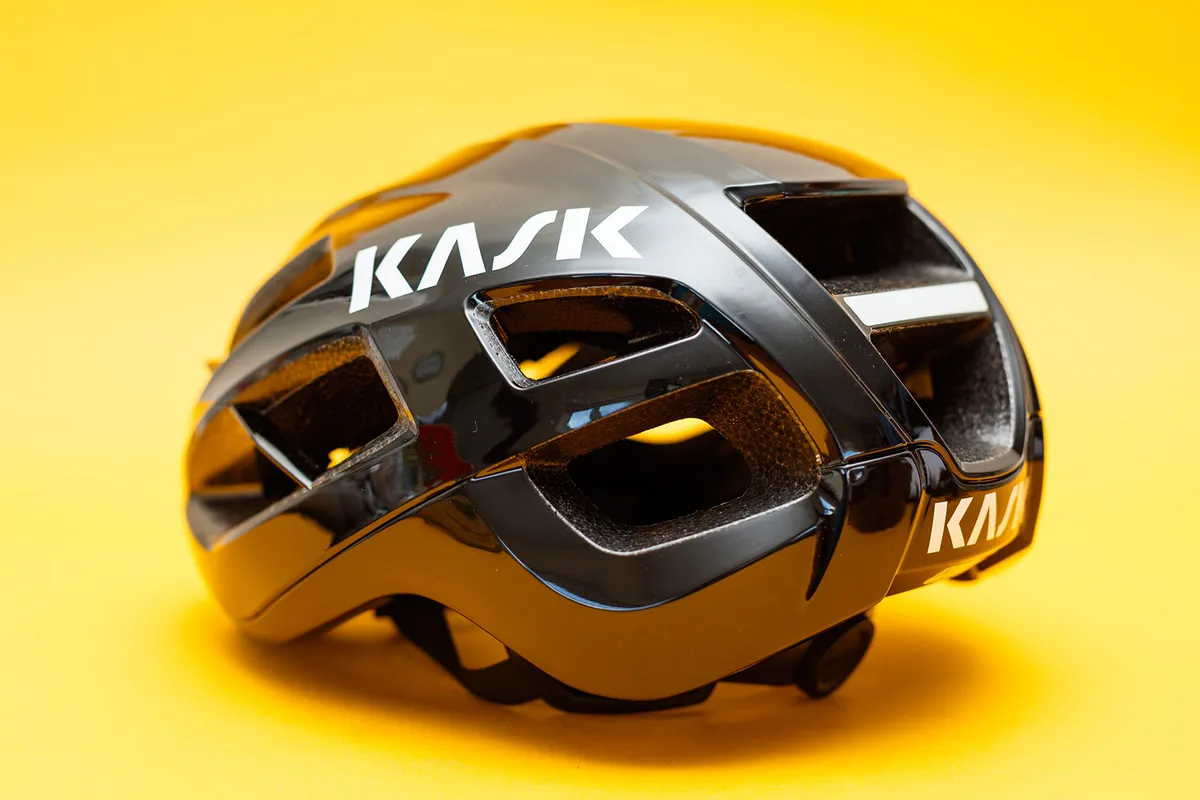
To its credit, Kask acknowledges this – giving the Protone Icon a 4/5 rating (on its arbitrary internal scale) for aerodynamics, compared to 5/5 for the Utopia Y and Elemento.
With its greater number of vents, though, the Protone Icon is a noticeably cooler helmet than those three.
As with other Kask helmets I’ve used, the Protone Icon is finished smartly and generally feels of very high quality.
The shell also offers excellent coverage for the EPS foam, which bodes well for long-term durability.
My black, size-medium Protone Icon weighed 239g.
That’s 9g more than the claimed weight, but around 30g lighter than the dedicated aero road helmets mentioned above (the Specialized Evade 3 weighs 272g, for example).
It’s 32g lighter than Kask’s Elemento too, despite costing £90 / $100 / €100 / AUD$161 less.
At £245 / $299.95 / €275 / AU$409, though, the Protone Icon still sits towards the upper end of the pricing scale.
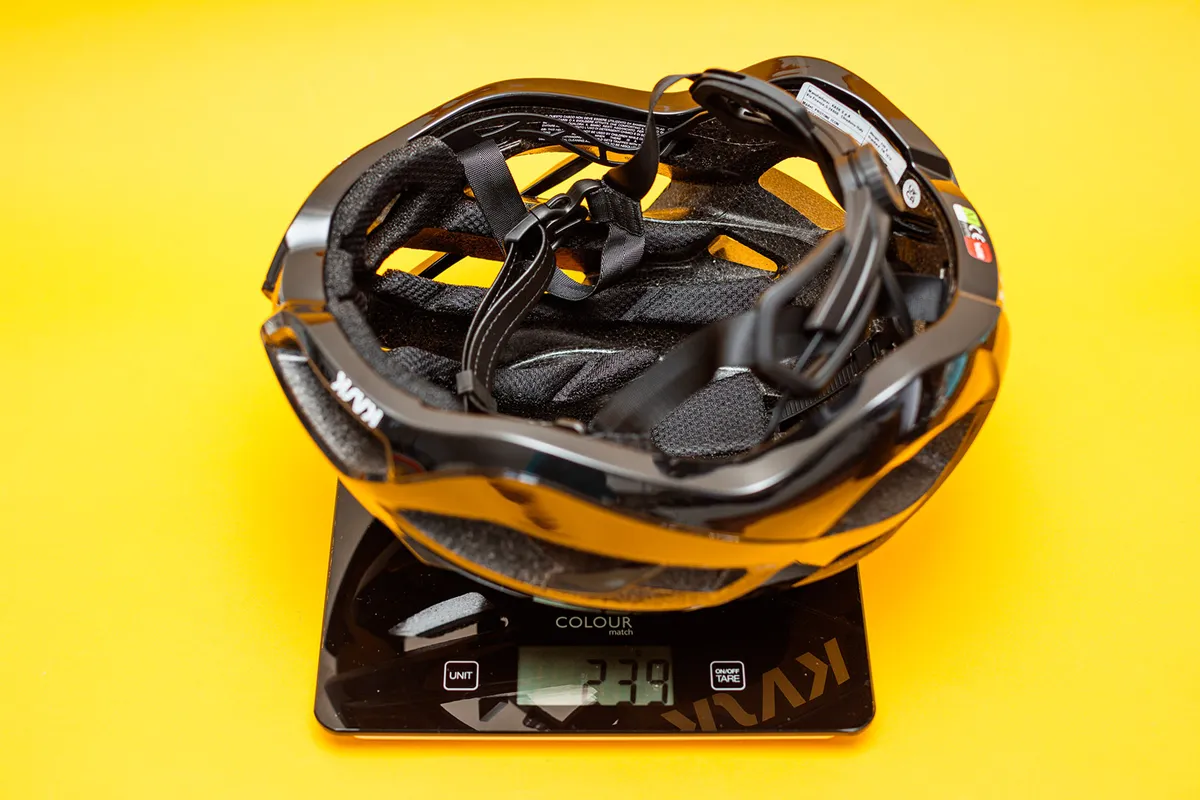
If black’s not to your taste, there are 13 other colour options available – by far the most for any helmet I’ve reviewed.
In terms of additional safety features (beyond the general European or US safety standards), Kask says it has tested the Protone Icon using its internal WG11 rotational impact test protocol.
Is Kask’s WG11 certification an effective alternative to MIPS technology? Unfortunately, it’s beyond the scope of this review to rule on that.
Nevertheless, it’s laudable that Kask and other helmet manufacturers are developing new materials and tests to offer enhanced safety above and beyond the basic standards.
Kask Protone Icon fit and performance
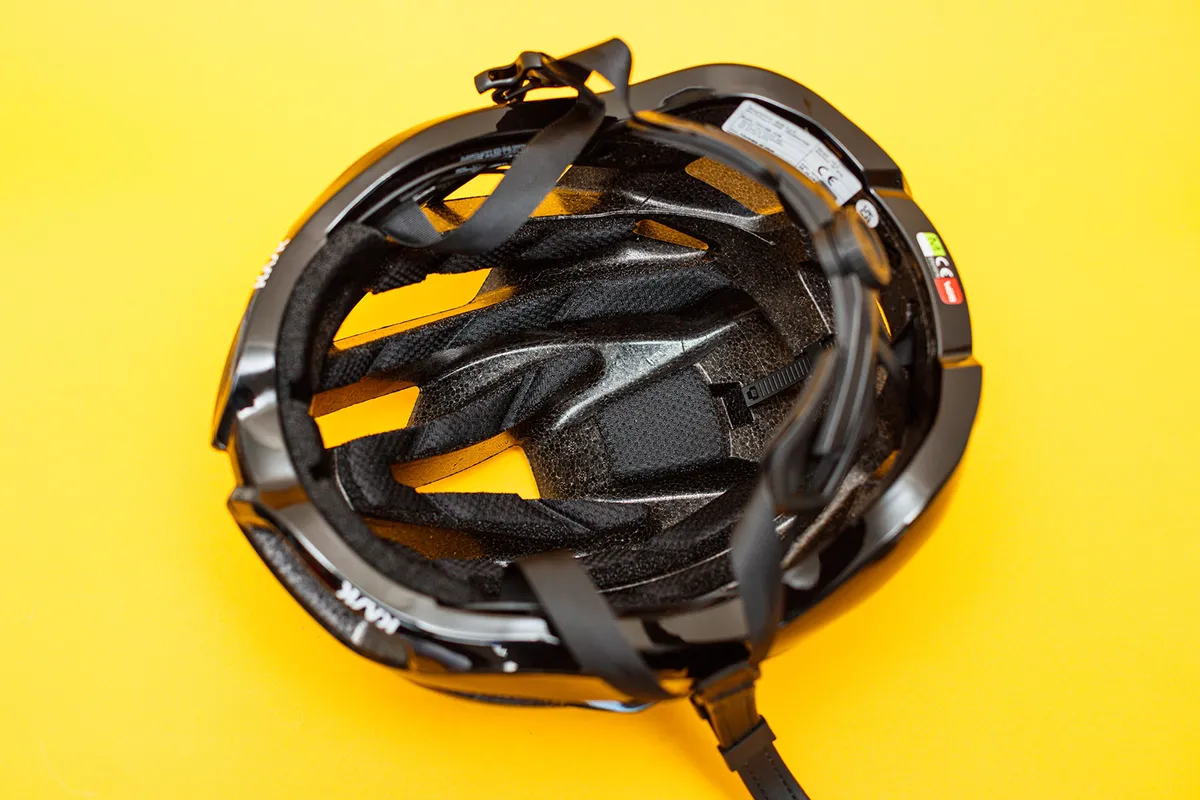
Thanks to its generous padding and low weight, the Kask Protone Icon is a very comfortable helmet to wear.
Once on and tightened up, it’s easy to forget you’re wearing it, which is exactly what you want.
As I found with the Kask Elemento, the Protone Icon’s Octofit+ retention system isn’t the best available though.
It certainly does the job, and the adjustment dial is big and grippy enough to be used even with thick winter gloves on.
However, the height-adjustment mechanism doesn’t hold firmly in place when not tightened up, and therefore needs to be reset every time you put the helmet on.
Given this only takes a few moments, it’s not a deal breaker, but it remains a minor annoyance nevertheless.
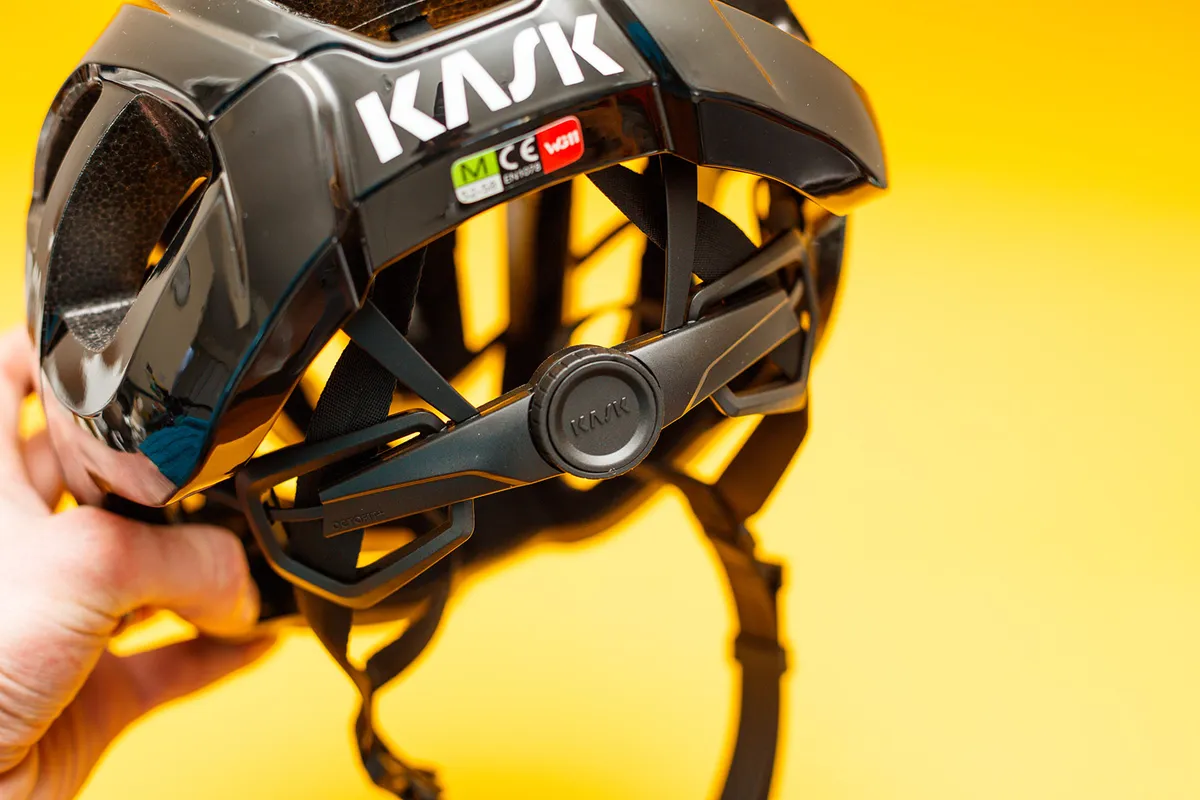
The chin strap also isn’t adjustable at the ears, although this didn’t pose any issues for me.
With your head tucked down at an aggressive angle – such as when riding in an aero hoods position or on the drops – the closed section of the Protone Icon’s shell is presented to the wind.
With no tail or protrusions sticking up in the wind, it’s easy to see how the Protone Icon has been designed to be aerodynamically efficient when used like this.
When sitting up in a more relaxed posture, though, the frontal ventilation holes allow plenty of airflow over your head, providing excellent cooling.
There’s also enough venting across the entirety of the shell to ensure good cooling at low speeds, which prevents it from feeling stuffy on hot days or when climbing.
As a result, while it's fair to say I feel the cold more than most, I’ve found I need to wear a cycling cap underneath the Protone Icon throughout the autumn and winter months.
The outermost of the front vents also offer secure and easy-to-access storage for sunglasses, which I always appreciate.
Kask Protone Icon bottom line
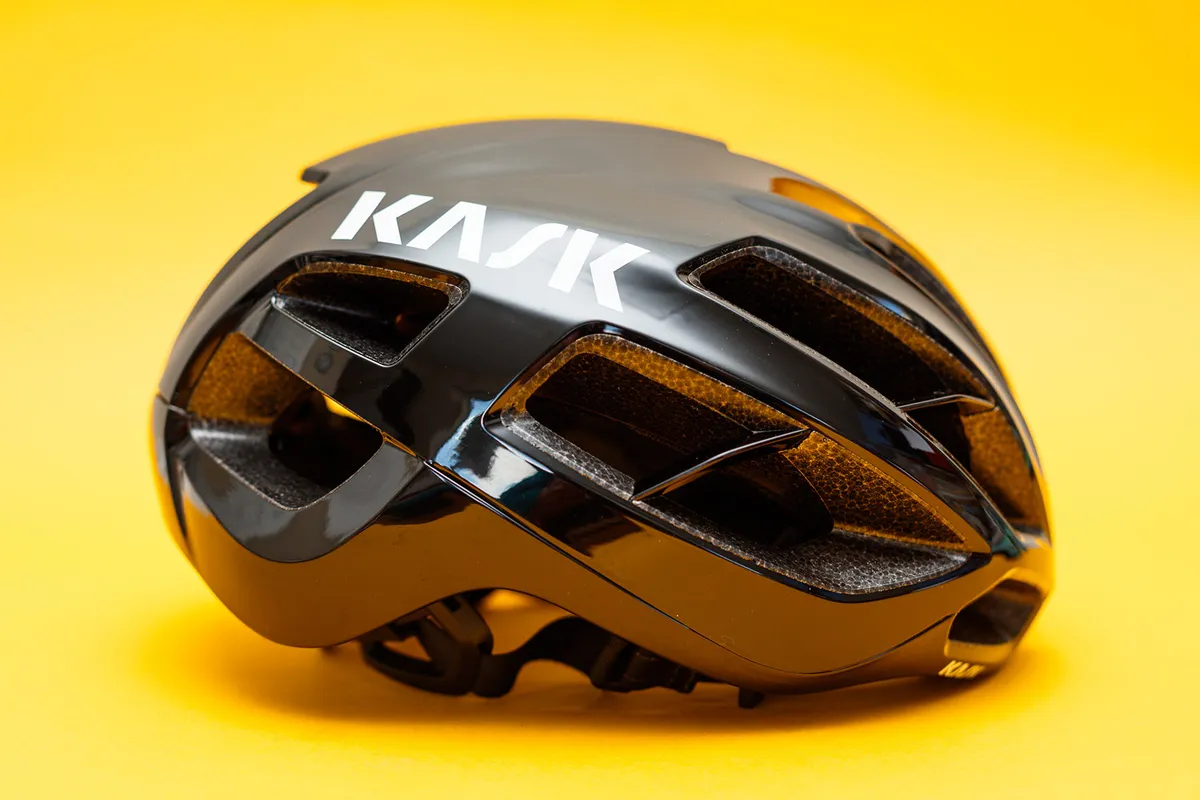
Overall, I’ve been impressed with the Kask Protone Icon. Despite being nearly a decade old, the general design and aesthetics of the original Protone still hold up, as does its balance of aerodynamic efficiency and ventilation.
There are likely more aerodynamic or better-ventilated helmets available for those looking to maximise a single metric.
As a stylish all-rounder for all-season use, though, the Kask Protone Icon strikes a great compromise.
Product
| Brand | kask |
| Price | 409.00 AUD,275.00 EUR,245.00 GBP,300.00 USD |
| Weight | 239.0000, GRAM (M) - |
Features
| br_helmetType | road |
| Features | Available sizes: S (50-56cm), M (52-58cm) and L (59-62cm) Colours: Available in 14 colorways |
